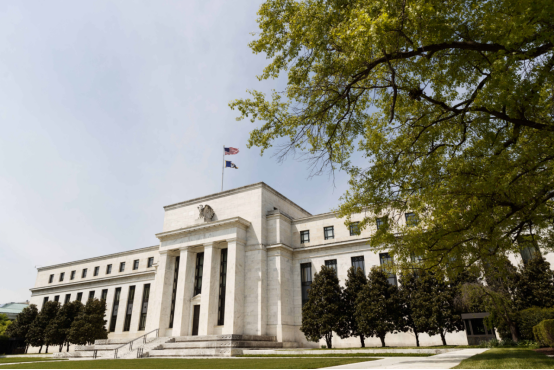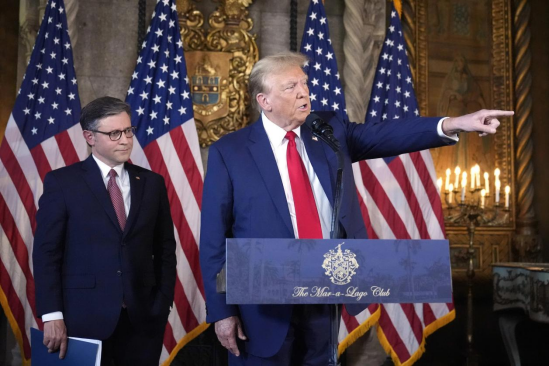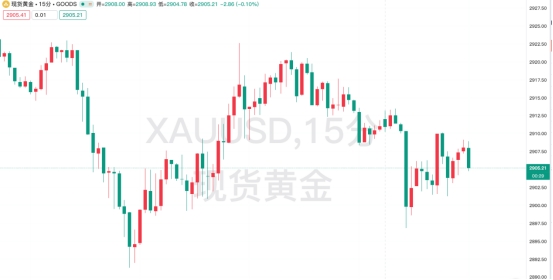Trump's repeated tariff policies highlight the risk aversion in the gold market
- 2025年3月10日
- Posted by: Macro Global Markets
- Category: News

Trump's repeated tariff policies highlight the risk aversion in the gold market
Macro Global Markets: On March 6 local time, US President Trump signed a tariff amendment, announcing the suspension of the 25% tariff on Canadian and Mexican goods that comply with the US-Mexico-Canada Agreement, and the exemption period will last until April 2. This policy shift came just two days after it announced on March 3 that "tariffs will take effect on the 4th", triggering severe fluctuations in global financial markets. As a traditional safe-haven asset, gold has demonstrated significant anti-inflation and hedging properties amid policy uncertainty.
Mexican President Sheinbaum stressed that during the suspension period, Mexico will synchronize drug control progress with the United States every two weeks and plans to promote the upgrading of local industries. The International Monetary Fund warned that the repeated changes in US trade policies could lead to a 2.3% reduction in global trade volume, dragging down global economic growth by 0.5 percentage points.

The Trump administration's repeated changes in tariff policy, coupled with its previous decision to impose additional tariffs on steel and aluminum products, have exacerbated market concerns about the stability of the global supply chain. Data shows that the trade volume between the United States and Canada and Mexico accounts for nearly 30% of its total foreign trade, with key industries such as automobiles and energy being the hardest hit. The exemption covers major industrial products such as automobiles and machinery, but Canada's potash fertilizer tariff remains at 10%. It is worth noting that Trump made it clear that the 25% tariff on steel and aluminum products will be implemented as planned on March 12, and the automobile tariff exemption will no longer be extended after it expires on April 2. Canadian Finance Minister LeBlanc immediately announced that the second phase of retaliatory tariffs worth C$125 billion would be postponed, having previously imposed tariffs on C$30 billion worth of US goods.
Affected by this, the international gold price broke through the integer mark of $2,900 per ounce on March 3, the day when Trump confirmed that the tariffs would take effect. The main contract of COMEX gold futures closed at $2,910.74 per ounce, up 1.8% from the previous week.
The inverse correlation between the US dollar and gold
Uncertainty over tariff policies has caused sharp fluctuations in the U.S. dollar index. On March 4, the day the tariffs came into effect, the dollar index fell 0.5% to 104.15, a nearly three-month low. Since gold is priced in dollars, a weaker greenback directly increases its attractiveness to holders of other currencies. However, as the news of the tariff suspension came out, the US dollar index briefly rebounded to 104.35, and the gold price came under pressure and fell back to the $2,900/ounce range.
Expectations of a rate cut by the Federal Reserve further supported gold prices. The current market expects a cumulative interest rate cut of 75-100 basis points by 2025, with the real interest rate falling to -1.2%. As a zero-interest asset, the opportunity cost of holding gold decreases as real interest rates fall, in stark contrast to US dollar assets.
Conclusion
Although short-term tariffs have temporarily eased market sentiment, global geopolitical risks remain high. Geopolitical events such as the United States' suspension of military aid to Ukraine and the tense situation in the Middle East continue to ferment, driving global central banks' demand for gold purchases.
The current gold market shows typical "policy market" characteristics, and Trump's "reciprocal tariffs" to be implemented on April 2 have become a new focus. Analysis points out that if the tariff policy continues to escalate, the gold price is expected to break through the pressure point of $2,930 per ounce; on the contrary, if the trade situation eases substantially, the gold price may face a technical pullback. Investors need to pay close attention to the Federal Reserve’s monetary policy trends and geopolitical developments and make rational investment decisions.

